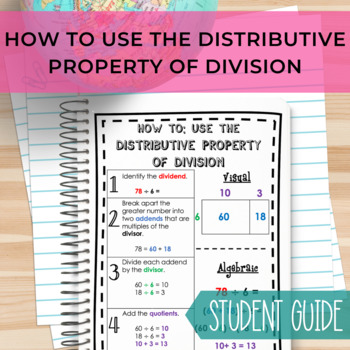How To: Use the Distributive Property of Division - Student Scaffold
- PDF
Description
Teaching division with the distributive property doesn't have to be painful with this simple guide to help students. It includes a visual, step-by-step explanation, and a color-coded example. This is great to give students who need support or hang in your classroom as a poster.
Also, send this home for parents, so they can see the strategies we are using in class!
Please consider leaving feedback for this product!
It means so much to me, and it helps you earn FREE products! For every review you leave, you earn 1 credit point toward a future purchase. Go to "My Purchases" to leave a review & thank you in advance!
If you hit the green FOLLOW ME button, you will get:
- Updates when new products are released
- Notifications when I have a sale
Connect With Me:
- Check out my blog to see the latest tips and tricks on integrating tech into your classroom! (and grab some freebies while you're there!)
- For all my latest teaching ideas, books to read, and Cricut stuff:
- If you want to see pictures of my cute dog and see behind the scenes tips and tricks:
- Check out the AMAZING Facebook group for tech tips and tricks for distance learning!
Facebook Group for Distance Learning Tips and Tricks
Questions? E-mail me at alexandra@techaboutmath.com


